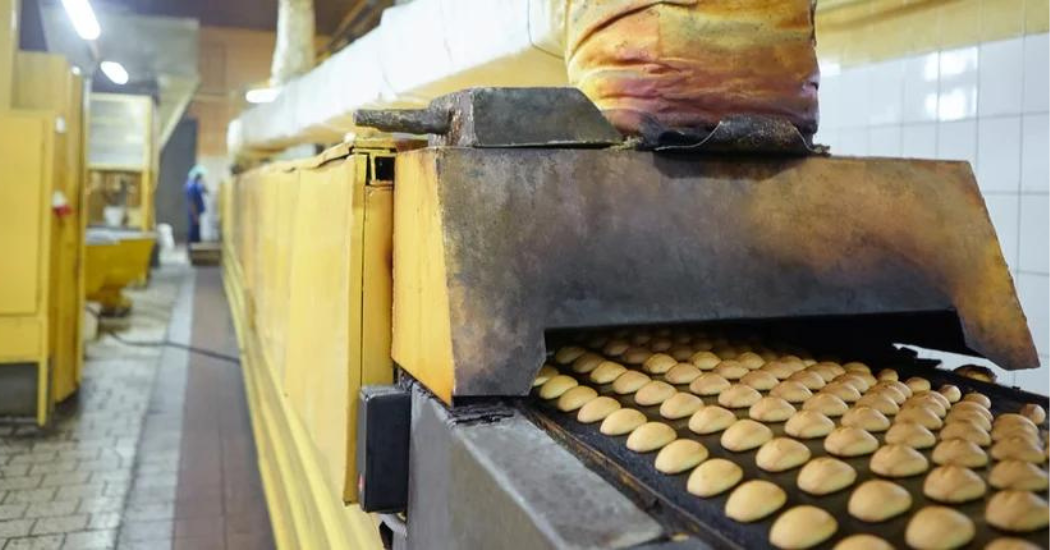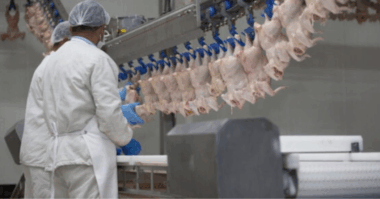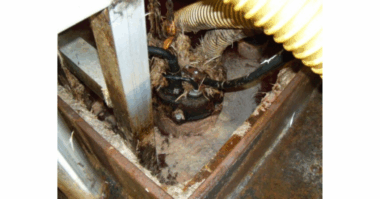Food and beverage industries have successfully used carbon graphite materials for many years in all types of applications.
The FDA has ruled that impervious carbon graphite articles are considered GRAS (Generally Recognized as Safe) for use in food handling equipment; this has enabled food & beverage producers to be able to use carbon graphite materials to solve some of their most challenging design problems.
In addition to this FDA ruling, other organizations like NSF, USP, and WRAS have approved carbon graphite grades for use in highly sanitary applications like pharmaceutical production and potable water distribution.
Case studies can be written about the use of carbon graphite in a huge number of food & beverage applications—below are just a few examples of industries that benefit from the versatility of carbon graphite.
1. Baked Goods | Conveyor Ovens
Cooking gingerbread in a conveyor oven.
In an industrial setting, baked goods are often produced in long conveyor ovens. These ovens can use hundreds of rollers, each of which are supported by two bearings. In the high temperature zones of these ovens, not just any bearing material will suffice.
Engineered plastics tend to soften and deform at ∼350°F and many conventional oil or grease lubricants used to lubricate roller bearings will begin to coke. There are food-safe high temperature greases available, but that grease is quite costly, and consistent lubrication of hundreds of bearings tends to be a daunting task for most maintenance crews.
Carbon graphite offers a heat resistant, self-lubricating option that is nearly maintenance-free and can often be implemented as a drop-in replacement to most bearing types.
 2. Frozen Foods | Flash Freezing
2. Frozen Foods | Flash Freezing
Flash freezing shrimp on a conveyor belt.
It’s not just high temperatures that pose design challenges for conveyor manufacturers. Freezer conveyor OEMs must somehow support rollers that are operating in freezing temperatures, where conventional oil and grease will thicken and become sluggish.
Frozen fruits, vegetables, and meats typically undergo a flash freezing process in cryogenic conditions. Although these temperatures will wreak havoc on most bearings, they do not compromise the self-lubricating ability of carbon graphite, which has virtually no lower temperature limit.
This is why carbon graphite materials are often used in safety-critical cryogenic applications like seal faces in liquid oxygen rocket boosters for space travel (which can see temperatures as low as -400°F!). Although the use of carbon graphite bearings in freezer conveyors is not as safety critical as a seal face in a rocket booster, it is just as effective at solving the problem at hand.
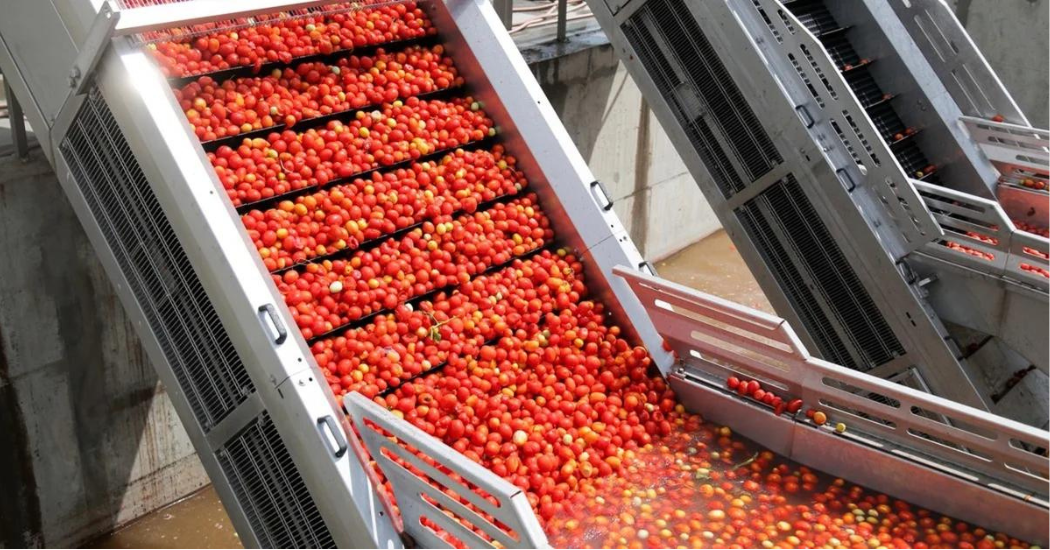 3. Vegetables | Blanching Process
3. Vegetables | Blanching Process
Many vegetables undergo a process called blanching, which essentially means that they are scalded in boiling water and subsequently plunged into iced water to stop the cooking process.
Blanching helps to prevent vegetables from “going bad” too quickly, since it halts enzyme actions which can cause loss of flavor, color, and texture. In an industrial setting, this process often involves pulling vegetables through a boiling water bath along a conveyor.
Not only can carbon graphite run fully submerged in hot water, the water it is submerged in actually improves the self-lubricating ability of carbon graphite. This makes carbon graphite the bearing material of choice for many industrial blancher manufacturers.
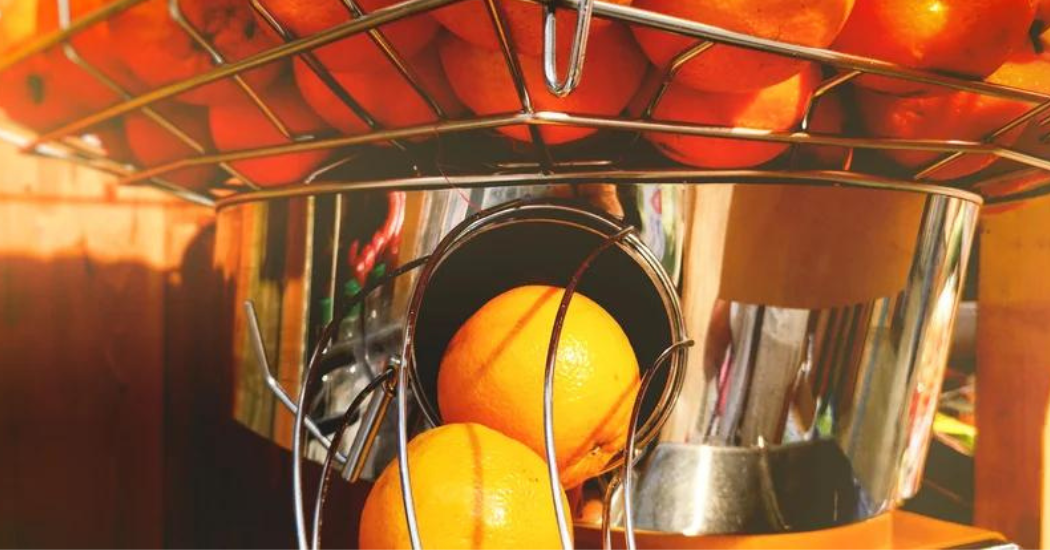 4. Citrus Fruits & Juices | Processing Acidic Foods
4. Citrus Fruits & Juices | Processing Acidic Foods
Citrus fruits like oranges and lemons pose a unique problem for industrial food processing equipment manufacturers. The acidity of these foods limits the materials these manufacturers can work with, since continuous exposure to even a relatively mild acid like citric acid can cause corrosion over time.
Carbon graphite, however, is up to the task. Carbon is an extremely inert material and can withstand exposure to caustic chemicals in many incredibly harsh environments.
In certain conditions, carbon graphite can withstand exposure to some of the most caustic acids out there, like hydrofluoric acid and sulfuric acid. Compared to these intense chemicals, citric acid is far less caustic, which is why citrus fruit & juice producers love carbon graphite materials. Carbon graphite bearings are commonly used in citrus fruit peelers, squeezers, and juicers around the world
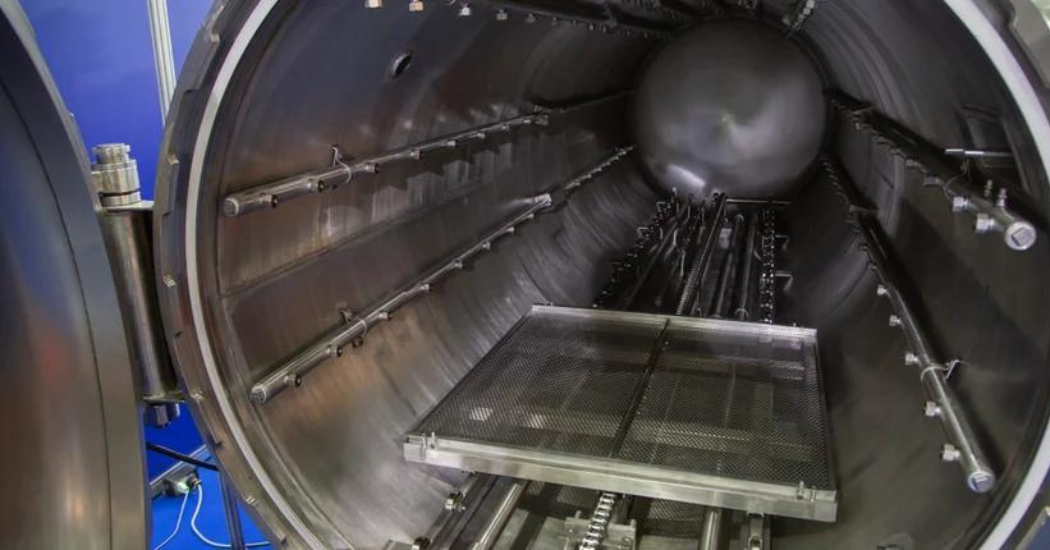 5. Sterilization | Rotary Steam Retorts
5. Sterilization | Rotary Steam Retorts
One of the most effective ways to sterilize food products is through steam exposure. Saturated steam kills off microorganisms like bacteria that can be very harmful to humans when ingested.
Mechanical components within food sterilization equipment must be designed such that they can function in the presence of saturated steam with minimal wear. Carbon graphite grades have been developed to exhibit excellent self-lubricating properties and wear resistance in the presence of steam. The same cannot be said for many alternative bearing materials.
For this reason, carbon graphite bearings are commonly used in rotary steam sterilization retorts used in the production of all types of food, from fruits to nuts.
Most industries use carbon graphite in one way or another. The versatility and durability of carbon graphite bearings allow them to operate in conditions where no other bearing can perform reliably. There are hundreds of carbon grades available, each of which has been designed for specific applications. For more information on which grade is right for your application, contact Metcar’s engineers today.

